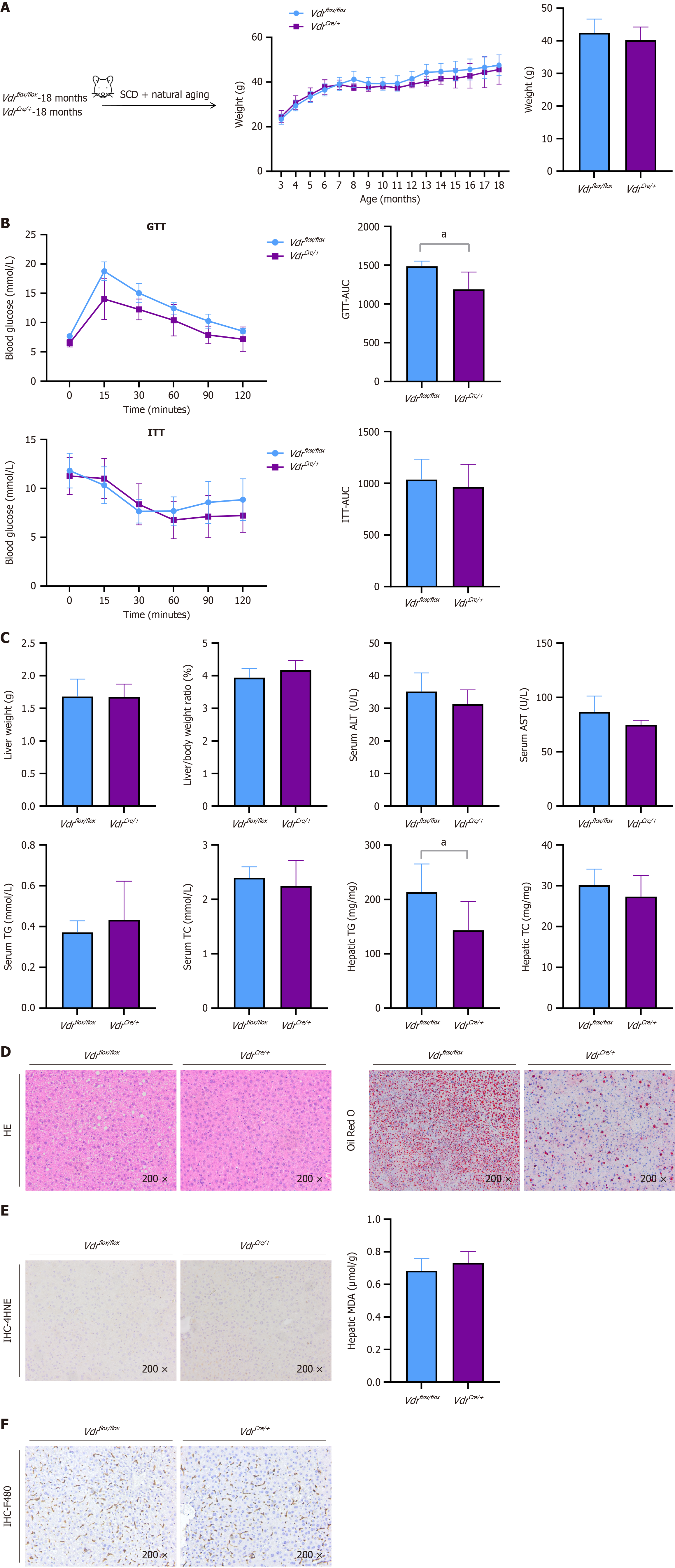Copyright
©The Author(s) 2025.
World J Gastroenterol. Apr 14, 2025; 31(14): 104117
Published online Apr 14, 2025. doi: 10.3748/wjg.v31.i14.104117
Published online Apr 14, 2025. doi: 10.3748/wjg.v31.i14.104117
Figure 5 The hepatic-specific knockout of vitamin D receptor ameliorated hepatic steatosis associated with senescence.
Eighteen-month-old vitamin D receptor (VDR)flox/flox mice and 18-month-old VDRCre/+ mice were fed a standard chow diet. A: Weights and changes in weight; B: Glucose tolerance test and associated area under the curve (AUC). Insulin tolerance test and associated AUC; C: Liver weights, liver-to-body weight ratio; serum levels of alanine aminotransferase, aspartate aminotransferase, triglycerides (TGs), and total cholesterol (TC), and hepatic levels of TGs and TC; D: Hematoxylin-eosin and Oil Red O staining (× 200) of the liver sections; E: Immunohistochemical (IEC) staining (× 200) for VDR in liver sections and hepatic levels of malondialdehyde; F: IHC staining (× 200) for F480 in liver sections. The data are presented as the means ± SDs. aP < 0.05. P calculated according to student’s t tests. SCD: Standard chow diet; GTT: Glucose tolerance test; ITT: Insulin tolerance test; AUC: Area under the curve; ALT: Alanine aminotransferase; AST: Aspartate aminotransferase; TG: Triglycerides; TC: Total cholesterol; HE: Hematoxylin-eosin; MDA: Malondialdehyde; IEC: Immunohistochemical.
- Citation: Zhu F, Lin BR, Lin SH, Yu CH, Yang YM. Hepatic-specific vitamin D receptor downregulation alleviates aging-related metabolic dysfunction-associated steatotic liver disease. World J Gastroenterol 2025; 31(14): 104117
- URL: https://www.wjgnet.com/1007-9327/full/v31/i14/104117.htm
- DOI: https://dx.doi.org/10.3748/wjg.v31.i14.104117









